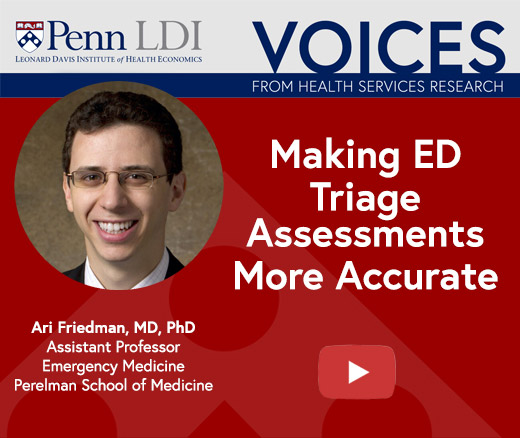Public health professionals have long dreamed of mounting evidence-based social media campaigns that can cut through the misinformation and resonate with the people who need help. But media campaigns like these are often unscientific and stuck with using untested messages. There hasn’t been a systematic way to generate health messages that resonate with a community.
Until now.
LDI Senior Fellow Dolores Albarracín and Man-pui Sally Chan have developed an automated AI system that creates effective social media campaigns in real time.
Their work focused on a high-priority group, Men Having Sex with Men (MSM), who are hard to reach and crucial to the government’s goal of ending the HIV epidemic by 2030.
The researchers—Dr. Albarracín is the Amy Gutmann University Professor while Dr. Chan is a Research Associate Professor at the Annenberg School for Communication—developed a training dataset of HIV tweets from keyword searches and expert accounts involving federal agencies, nonprofit groups, and HIV/STI researchers. They used Artificial Intelligence to identify the posts that were most relevant and actionable. They then recommended those messages to health officials in 42 U.S. counties who chose the messages to post on their social media accounts.
The system’s recommended messages were six times more likely to be posted compared to a control group of traditional posts, according to their recent article in the journal PNAS Nexus.
“This is a game changer,” Albarracín said. “We developed a process that could generate a “living” campaign. This is critical to stay ahead of an epidemic and to remain relevant in any communication context.”
Any group could set up a similar pipeline, especially if they collaborate with other agencies, the researchers believe. Groups would have to replicate the social media pipeline, which is publicly available, gather some human data to train their models, and launch their campaign.
“We have not estimated the cost,” Albarracín added. But “I can’t imagine it’d be expensive relative to designing messages that have no evidence of efficacy one by one.”
Their next project is running a randomized controlled trial that tests the system with Philadelphia residents. For more on this project, read the Q&A below with Dr. Albarracin, who directs Penn’s Social Action Lab.
What motivated you to do this study? Why is it important?
Albarracín: With notable exceptions, public health messages and interventions have always been designed through a slow and expensive combination of policymakers’ insights, community input, and creatives from advertising agencies. The design and efficacy are both part of the black box, which seemed intellectually and practically unsatisfying. The campaigns also become outdated very quickly, resulting in a limited message volume in the public sphere.
Therefore, in 2014, I began to work on using AI to design a process to design campaigns that (a) were theory- and evidence-based, (b) were generated in real time, and (c) were community-based. My collaborator, Sally Chan, came on board for that, and we developed a process that could generate a “living” campaign. This is critical to stay ahead of an epidemic and to remain relevant in any communication context.
Public health campaigns are costly, their effectiveness is seldom systematically assessed, and no systematic methods existed to build health campaigns in real-time. This is a game changer.
What are the main components of your “Living Method?” Can other groups do it?
Albarracín: The pipeline is like this: (1) Obtaining continuous access to social media messages, using an API or social media aggregator. (2) Selecting messages based on topic and adaptability to different contexts. (3) Using Artificial Intelligence (e.g., neural networks or now generative AI) to select messages that are acceptable and actionable based on theory and ground truth data from human participants. (4) Recommending the messages to an agency, such as a health department. (5) Having agency staff vet messages, select, and send messages as either quotes or adaptations to a particular format (e.g., agency or area), acknowledging the message’s source. (6) Posting the messages from the agency on social media. (7) Receiving the messages within communities.
In our case, the topic was HIV prevention. Any group can implement a similar process. Sally and I are available to answer questions.
What role did AI/machine learning play in this study?
Albarracín: AI was used to learn what makes a message persuasive and actionable from human data and to then process hundreds of thousands of messages and select appropriate ones in real time.
This is the first automated, adaptive system to automatically gather and recommend HIV prevention and testing messages in the U.S. Why is that significant?
The main significance is to attempt to develop a standardized, testable, theory-based approach to develop virtually any campaign. The second significance is the overwhelming impact and buy-in of government and community agencies. The method also increased the volume of messages posted by agencies in a dramatic way, thus facilitating social media operations.
What do you think are your most important findings and why?
Albarracín: The most important findings are that (a) participants find the selected messages persuasive and want to share, and (b) government and community agencies in 42 US jurisdictions are 6 times as likely to post the messages selected with the experimental method versus a less targeted selection.
The map shows the counties that were jurisdiction of the agencies involved in the study.
sharing through AI, Figure 3.
How could public health groups use your system? How much would it cost? Can it be scaled up?
Albarracín: Any group could set up a similar pipeline, particularly in collaboration with other agencies. This was tested in 42 jurisdictions. It should be best practice to design public health campaigns that set ambitious coverage and timeliness goals. We have not estimated the cost. I can’t imagine it’d be expensive relative to designing messages that have no evidence of efficacy one by one.
Could other groups spreading misinformation use your techniques to spread their falsities? How can you protect against that?
Albarracín: Yes, any scientific theory and technology can be used for good or evil. The protection against evil use will come from (a) platforms regulating misinformation, as private businesses; (b) audiences leaving platforms where misinformation prevails; and (c) government agencies ensuring effective and frequent science-based messaging.
What is your next area for research?
Albarracín: The studies did not test whether a recipient changes behavior but whether the behavior of agencies is affected. For recipients, we measured precursors of behavior, and the next step is a randomized controlled trial where the system is tested with residents of the City of Philadelphia.
You chose this group because of the CDC’s HIV goal. Could this be used in other groups?
Albarracín: The study was done to prevent HIV, a key interest for my team and a public health area where the U.S. has traditionally been ahead. In particular, the U.S. has been embarked on the initiative to eradicate HIV by 2030, a program that Anthony Fauci began. The initiative involves reducing infections in the groups with more frequent infections, with MSM being a priority group. The initiative requires an active role by public health agencies and organizations and provides an opportunity to innovate in this domain.
This could be used by any group. They would need to replicate the pipeline, which is publicly available, gather some human data to train their models, and start their campaign. I would recommend re-gathering human data every few years or more frequently, if the issue is volatile. The agency would have to train its staff person to vet the content, which is critical for any serious health campaign.
The study, “Living Health-Promotion Campaigns for Communities in the United States: Decentralized Content Extraction and Sharing Through AI,” was published on June 17, 2025, in PNAS Nexus. Authors include Man-pui Sally Chan, Haesung Jung, Alex Morales, Angela Zhang, Devlin O’Keefe, Sarah Joseph, Anthony Hron, Janet Davis, Tito Terry, Tiffany Peterson, Corey Herrman, Melissa Phillips, Jennifer Osborne, Kelley G. McBride, Martin Hensley, Adriana Todorov, Alain Morrissette, Georgett Watson, Ethan Knox, Erin Lark, Elisa Long, Carolina Guerrero-Lara, Timothy Rissel, Michele Raymond, Patrick Sullivan, Sophie Lohmann, Aashna Sunderrajan, Marta R. Durantini, Travis Sanchez, Chengxiang Zhai, Dolores Albarracín.
Author

More on AI in Health Care

AI in Health Care and the FDA’s Blind Spot
A Novel Study Shows That Large Language Models Act Like Medical Devices in Clinical Care Scenarios

AI Scribes: Can Technology Do More Than Free Doctors From Data Entry?
A Penn Lab Takes a New Approach to Unpacking the Doctor-Patient Encounter

The Missing Link to Regulate AI Systems in Health
We Need a System That Watches AI Care at the Bedside, Two LDI Fellows Say

Making ED Triage Assessments More Accurate
A New Study Adds More Clinical Factors to the Algorithmic Process
AI Intervention Reduced End-of-Life Spending for Patients with Cancer
Machine-Learning Tool Combined with Behavioral Nudges Scaled Down Treatment While Maintaining Supportive Therapies

Could Machine Learning be Helpful in Cancer Care?
Oncologists Have Reservations About Prognostic Algorithms, but They Might Be Useful
